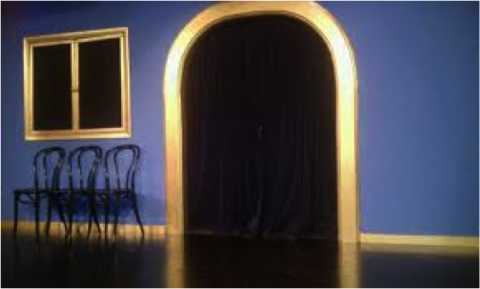Sitting in the audience during any long-form improvised theatrical performance the importance of memory becomes readily apparent. One of the best-known long-form improvisations, “The Harold,” was developed by Del Close (Halpern, Close, & Johnson, 1994) and is performed several nights a week at Chicago’s IO (formerly Improv Olympic). Based on a single suggestion from the audience the players begin to “jam” together as they explore the interesting dimensions and associations with the suggestion. This jam session may start with a motion, sound, phrase, exclamation or any number of responses. As the players accept and explore these discoveries soon the first scene and characters emerge, and the players not directly involved on-stage retreat to the sidelines as intent participant-observers to the unfolding action.
Collectively, the players must hold both the original “given” (the audience suggestion) and all of the discoveries that emerge from that given. Their challenge is to use this organizational memory to fuel their discoveries, improvised characters and action over the next forty-five or so minutes. If their relationship to this memory is overly procedural (tied to successful bits and characters from past performances), they will not be able to continue to unfold the action and mine the givens for increasingly surprising discoveries, but fall into recursive routines enacting the original assumptions and one-dimensional dynamics.
Organizations are similarly challenged as others (Moorman & Miner, 1998a; Vera & Crossan, 2004) have described, impeded in their ability to improvise when they are overly tied to routines and procedures. However, memory of past routines and approaches can be useful raw material for a novel response to the unexpected (Moorman & Miner, 1998b).
Memory of the “givens” in improvisation, the original inspiration, the organizational vision, the boundaries of available resources, and ready access to various dimensions of knowledge (representational, reflective, and relational), as well as past organizational routines and effective responses are all dependent on a present moment lived experience that includes a relationship to the past and (in the case of vision and goals) the imagined future. This capacity is highly valued on the improv stage. Recently I brought a group of students to a performance at Chicago’s IO. During the post-show discussion a student asked the improvisers, “What quality or competence do you think makes someone a great improviser?” One of the seasoned players responded, “A high point of reference. By that I mean, someone who is well read, is up on current events and popular culture and can draw on any of it at just the right moment. That makes for a very rich improvisation.”
For improvisers both in the theater an organizational settings memory itself does not impede successful improvisation, but the individual’s relationship to memory and the context (and culture) within which the improvisation is occurring. In other words, memory of the “way we’ve always done things” can be either a limiting routine, or (with “Yes, and…”) a springboard to a novel response.
Balancing Creativity and Constraint
When you think about the givens that you must play within in your organization or work, what systems, process and strategies do you use to help you maintain a lively relationship to them?
Halpern, C., Close, D., & Johnson, K. H. (1994). Truth in comedy: The manual of improvisation. Colorado Springs, CO: Meriwether.
Moorman, C., & Miner, A. S. (1998a). Organizational improvisation and organizational memory. Academy of Management Review, 23(4), 698-723.
Moorman, C., & Miner, A. S. (1998b). The convergence of planning and execution: Improvisation in new product development. Journal of Marketing, 62(3), 1—20.
Vera, D. M., & Crossan, M. (2004). Theatrical Improvisation: Lessons for organizations. Organizational Studies, 25(5), 727-749.

